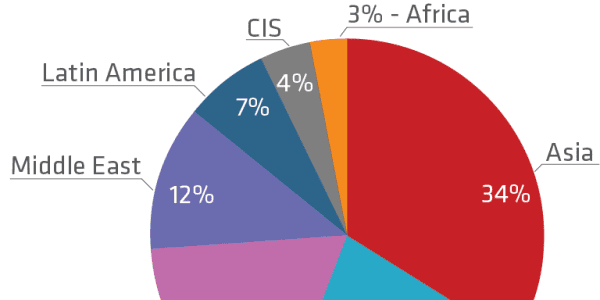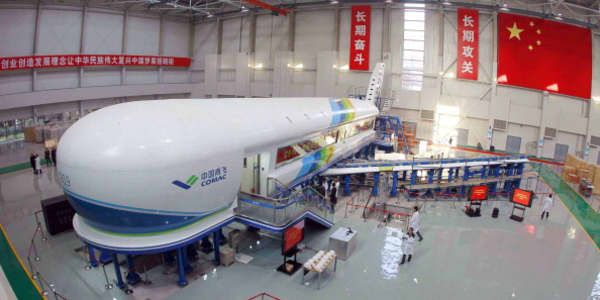From overhead television monitors that played select movies on a loop to seatback touch screens with a rich library of content – airlines have made great strides in in-flight entertainment over the past two decades, and it's about to get even better.
There are several technologies currently being developed to take in-flight entertainment and the flying experience to new heights.
Thales, a key player in the on-board entertainment solutions space, for instance, is working on embedding gesture control and eye tracking technology into in-flight entertainment systems.
With the gesture control technology, passengers would no longer need to use a controller to interact with the screen. Meanwhile, with eye tracking technology passengers would no longer need to hit the pause button on a movie before interacting with an air stewardess.
"It's all to do with improving the passenger experience and driving that wow factor that premium airlines want to achieve with customers," a spokesperson from Thales told CNBC.
The industry is also looking into integrating directional acoustics into airplane seats, such that a passenger would no longer need to use headphones. Directional sound is a technology that concentrates acoustic energy into a narrow beam so that it can be projected into a specific area, much as a spotlight focuses light.
"We are striving to get as close as possible to the latest consumer technology. Our goal industry-wide is to make sure that the passenger has as close an experience in the air as on the ground," the Thales spokesperson said.
While these are exciting developments, they will more than likely show up in first and business-class cabins, before economy, say industry watchers.
(Read more: SingaporeAirshow 2014 to highlight the rise of Asia)
"Getting that business class passenger is so key. That's where airlines put their investments. If you can differentiate like that in business class, somebody will go for it. They are always trying to leap frog each other," said David Stewart, vice president of consultancy ICF International.
However, there will be some changes in the way in which passengers across all segments will consume content over the next decade.
There will be increasing synchronization between personal devices and the in-flight entertainment system, such that passengers will be to view or listen to content offered by the airline on their own tablets or smartphones.
"It's moving in the direction of cloud computing, rather than Kris World [Singapore Airlines' entertainment system] as we know it today," added Dennis Ling, Singapore office leader at ICF International.
(Read more: Can Asia's low-cost carriers go the distance?)
This is set to become prevalent with low-cost carriers, who will likely charge for downloading content, said analysts.
The use of the internet whilst flying will also become increasingly commonplace.
"Today, for example, you can get internet on board with some airlines. But the amount of data that you upload and download is quite restricted - that will change over time - and you'll have the ability to upload and download like at home or in the office," said David Velupillai, market director at Airbus Corporate Jets.
Another key difference between flying a decade from now will be the number of people using their mobile phones on airplanes.
(Read more: Private jets bet on America for big orders)
"People are much more likely to use their own phone on board - because they probably have greater confidence in how much it's going to cost them," Velupillai said.
"People using mobile phones for conversations - it's going to happen. We used to have the smoking zones, now we'll have mobile-free zones," Stewart added.
The European Aviation Safety Agency ruled in November that travelers on EU airlines could use their devices to make voice calls during on flights. However, there is strong public opposition to in-flight calls in the United States, where lawmakers are currently taking steps to ban in-flight calls.
—By CNBC's Ansuya Harjani. Follow her on Twitter:@Ansuya_H





